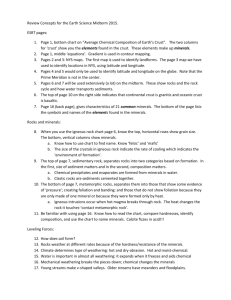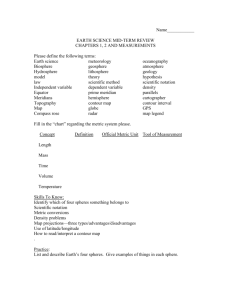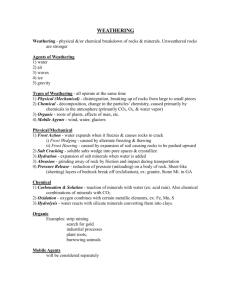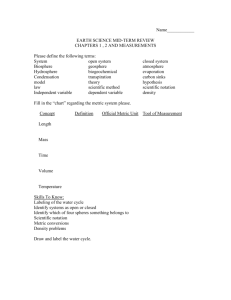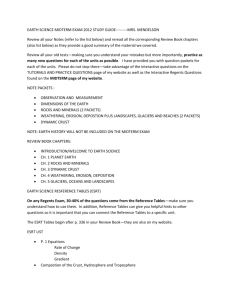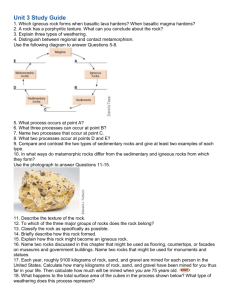ESRG Mid-term 2014
advertisement
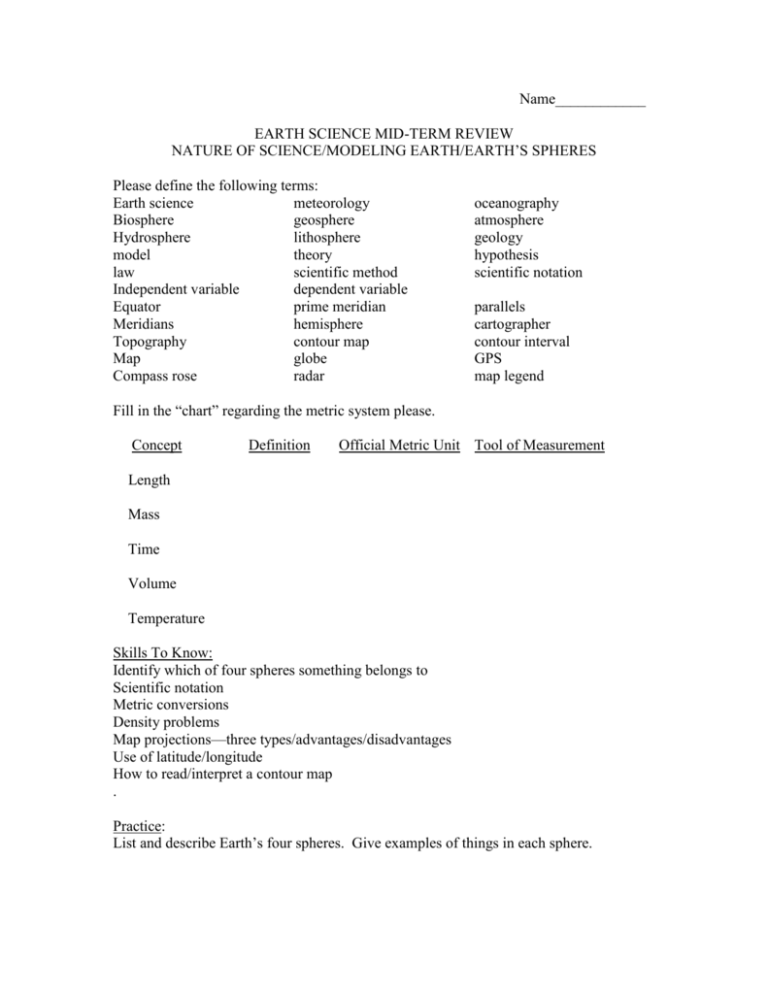
Name____________ EARTH SCIENCE MID-TERM REVIEW NATURE OF SCIENCE/MODELING EARTH/EARTH’S SPHERES Please define the following terms: Earth science meteorology Biosphere geosphere Hydrosphere lithosphere model theory law scientific method Independent variable dependent variable Equator prime meridian Meridians hemisphere Topography contour map Map globe Compass rose radar oceanography atmosphere geology hypothesis scientific notation parallels cartographer contour interval GPS map legend Fill in the “chart” regarding the metric system please. Concept Definition Official Metric Unit Tool of Measurement Length Mass Time Volume Temperature Skills To Know: Identify which of four spheres something belongs to Scientific notation Metric conversions Density problems Map projections—three types/advantages/disadvantages Use of latitude/longitude How to read/interpret a contour map . Practice: List and describe Earth’s four spheres. Give examples of things in each sphere. Put each measurement into scientific notation please. 4 000 000 m ______________ 425 m____________________ 0.000 045 m__________________ 0.052 m______________________ Put each measurement into standard notation please. 4.6 x 10 4 _____________________ 3.75 x 10 -3 ____________________ 4.3 x 10 0______________________ Make the following metric conversions using the dimensional analysis method please. 250 kg =_____________hg 0.003 mg =____________cg 30 dam =____________dg 655 cg =______________dg LATITUDE/LONGITUDE: Draw and “label” a globe. Mark and label the equator, three lines of latitude, and three lines of longitude. Review practice sheets on Latitude/longitude. COUNTOUR MAPS: List facts about contour maps below. What does it look like as the slope gets steeper? As it flattens? Draw a picture of a contour map and label each of these scenarios. Review practice sheets on contour Name_________________ EARTH SCIENCE MID-TERM REVIEW ELEMENTS/MINERALS/ROCKS Give the symbols for each element please. Sulfur____________ Hydrogen______________ Silver____________ Gold__________________ Nickel___________ iron___________________ Nitrogen__________ silicon_________________ Copper____________ phosphorus_____________ Iodine_____________ chlorine________________ Bromine___________ lead___________________ Mercury___________ zinc___________________ Potassium__________ tungsten________________ Sodium____________ neon___________________ Define the following terms please: Luster cleavage Hardness specific gravity Rock magma felsic magma mafic magma Sedimentary rocks metamorphic rocks Stratification intrusive igneous rock Pluton batholith Sill Bowen’s reaction series Helium_______________ Cobalt________________ magnesium_____________ oxygen_________________ calcium_________________ aluminum_______________ fluorine_________________ chromium_______________ tin_____________________ carbon__________________ streak characteristics of minerals lava igneous rocks rock cycle extrusive igneous rock dike Skills to Know: Be able to identify characteristics of the minerals from our class lab. Be able to identify characteristics of the rocks from our rock lab. Be able to classify minerals into their families. Be able to classify rocks into their families. Draw and label the rock cycle. Minerals from class: Calcite— Halite— Magnetite— Pyrite— Talc— Quartz-Rocks from class: List each rock from our class lab and briefly describe it. Mineral Groups: List minerals in each group please. Silicates— Native elements— Carbonates— Oxides— Sulfides— Rock Groups: List rocks in each group please. Igneous: Granite— Gabbro— Diorite— Sedimentary: Clastic— Chemical— Organic— Metamorphic: Name________________ EARTH SCIENCE FINAL REVIEW Plate Tectonics/Earthquakes/Volcanoes Terms and Concepts: Continental drift Asthenosphere Mantle Divergent boundary Shield volcano Terrane Pyroclastic flow s-waves epicenter tsunami Alfred Wegner inner core crust convergent boundary cinder cone volcano viscosity earthquake Richter scale focus seismic gap plate tectonics outer core evidence for PT transform boundary composite volcano types of plutons p-waves Modified Mercalli seismometer causes of earthquakes Some Additional Things to Know: What happens at each type of plate boundary? What process do scientists use to tell epicenter of earthquake? What does each type of volcano look like? Name_______________ EARTH SCIENCE MID-TERM REVIEW CHAPTERS 7 AND 8 Terms and Concepts: Weathering Mechanical weathering Hydrolysis Dunes Soil Horizon B Avalanche Slump Continental glacier erosion chemical weathering abrasion soil Soil Horizon C creep firn deposition oxidation frost wedging Soil Horizon A agents of erosion mudflow valley glacier Some additional things to know: Factors that determine rates of weathering How to prevent soil erosion Characteristics of each soil horizon layer How to differentiate between weathering, erosion, and deposition List the types of weathering and classify each as mechanical or chemical please. Describe the process in which soil is formed please. Draw and label a soil profile. Describe characteristics of each soil layer.


